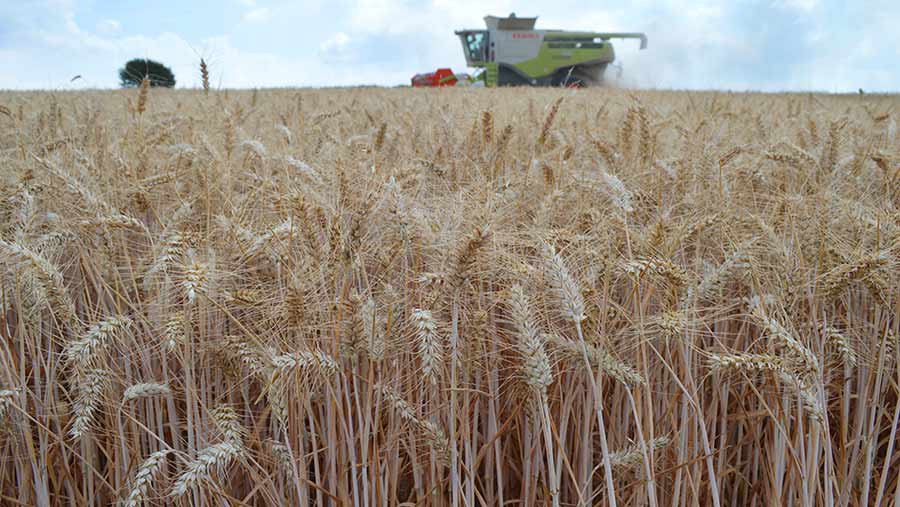AHDB examines effects of drought across all farm sectors

The AHDB has released an update to its drought impact report, examining the effects of the prolonged dry weather this summer on each farm sector.
The levy board added that although the weather has since changed, many of the implications of one of the driest summers on record were still being felt.
See also: Why growers must reduce reliance on pesticides
Cereals and oilseeds
- Rain in the autumn and spring planting windows led to a poor start for crops.
- May’s dry weather helped growth above ground, but meant some spring crops’ root structures suffered.
- Drought conditions peaked during yield-formation time, leading to concerns over yields and quality.
- The dry weather allowed harvest to start up to two weeks earlier than averaged over the past five years.
- Yields varied depending on region and soil type. Crops on heavier land generally performed better and were not far off the average. Crops on lighter soil suffered the most, with the effect on yield and quality varying greatly.
- Wheat quality has been generally good, despite yields dropping back slightly on the five year average.
- Barley has seen variability in screening and higher levels of nitrogen than desired by maltsters.
- Oilseed rape yields have been down. Reports have come in of growers harvesting early in the morning to guarantee adequate moisture levels.
- The European drought, alongside weather concerns in the Black Sea region, have supported global prices.
- Higher domestic demand have helped physical prices, with some livestock-dense regions showing more movement.
Dairy
- Milk production dropped during the summer and was behind last year, but remains in line with AHDB Dairy estimates.
- Milk yields have held up relatively well, often at the expense of farmers’ silage stocks and bought-in feed.
- Concerns about how reduced silage stocks and rising feed prices will hit milk production this winter.
- Milk-to-feed-price ratio has improved in the past few months, but is still running behind the five-year average. This means feed is less affordable and will put pressure on yields. If feed prices increase later in the year, producers will require farmgate price rises to prevent a fall in milk production.
- Higher GB slaughterings of dairy cows were recorded in the summer, but the resultant effect on volumes has been small.
- The effects of heath stress on fertility rates will only become clear when calving figures are published.
Potatoes
- Planted area was negatively affected by the adverse weather – delaying planting and affecting growing conditions of the early crop.
- AHDB data from 2017 showed only half of the planted area had irrigation available – figures unlikely to have changed this year.
- Growers able to irrigate were largely able to mitigate the dry conditions, while adding costs and extra time to the process.
- Growers without irrigation have seen yields negatively affected and more prevalent instances of skin freshness issues. Recent rain will have caused secondary growth for some.
- New-crop prices have begun well this season, with the first free-buy WAPS price for 2018 far higher than in recent years. The overall WAPS price has fallen back since then, but remains insulated by limited supply.
- Many are holding off lifting until crops bulk out.
Red meat
- Scant evident that beef and veal production has been affected in a large way.
- Cow slaughter was already high, but increased during the drought
- Throughputs remained stable due to restrained demand, despite more slaughter animals being available.
- Supplies were withdrawn when grass growth began picking up.
- Carcass weights overall showed little change.
- Effect of drought is likely to be delayed until housing as most cattle were fed first-cut silage and grazed second-cut land.
Pigs
- Average pork production between May and July was above year-earlier levels, with the prior winter conditions offering more of a problem for producers than the drought.
- Average carcass weights across the period were above year-earlier level.
- There are fears heat stress will affect fertility in pigs, affecting production in early 2019.
- Concerns remain for all livestock producers over winter feed supplies and costs.
